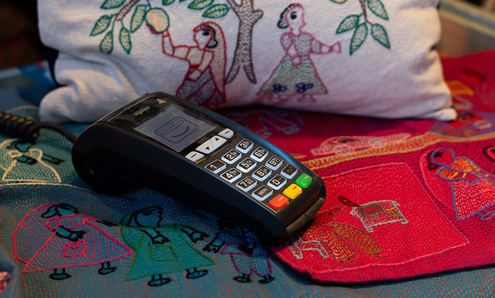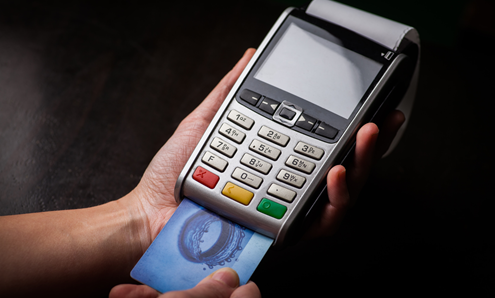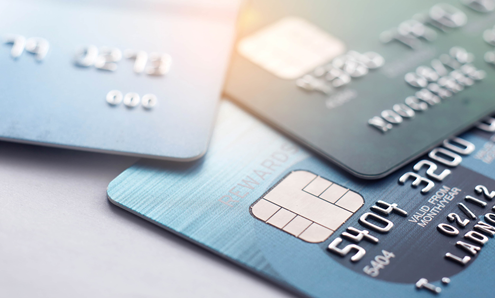How to process returns in-store: best practice for managing product refunds
01 November 2024 | Published by Jodie Wilkinson
As a small business in the retail industry, no doubt you’re au fait with the ins and outs of accepting payments; it’s the backbone of trading, after all.
But when it comes to refunds and returns, not everyone is as clued up despite the fact they’re a by-product of working in sales. With nearly one in ten (9%) of all products purchased in brick-and-mortar stores being returned, businesses need to have an efficient product refund system in place to make the exchange as streamlined as possible for all parties. As well as this, 62% of shoppers said they were more likely to shop online if they could return items in-store. This shows just how important in-store refunds are to customers and how much of an impact they can have on eCommerce overall.
With a top-notch refund policy and properly trained staff, you can turn a potential negative into a definite positive: into excellent customer service. Find out how to process a refund on your card machine and our expert guidance on managing product returns in-store.
Why do customers return products?
To improve your return management process, it’s worth understanding why your customers may want their money back in the first place. Gaining this insight is the first step in how to turn a dissatisfied shopper into a repeat customer.
It's up to you whether you have a returns policy, or what you want to include in it.
There are lots of reasons why someone may want a refund, but the most common ones are:
- They changed their mind – This is usually the most popular cause for a refund, and, unfortunately, there’s little businesses can do to sway the customer’s decision. In this situation, the best action is to ensure the customer receives their money back as smoothly as possible.
- A mistake was made – Purchases resulting from a mistake will either be because of an error made by the customer, such as they bought the wrong size by accident, or by the business, for example, if the sizes were mislabelled. Being aware of any mistakes that you make lets you prevent them from happening again in the future.
- They’re engaging in ‘wardrobing’ – ‘Wardrobing’ describes a type of return fraud where a customer buys an item with the intent of using or wearing it and then returning it for a full refund. It’s especially common amongst clothing items, and a 2019 survey found that one-fifth of shoppers have admitted to wardrobing.
- They’re returning a gift – Unwanted gifts can often result in recipients bringing their present back to the store for a cash refund. Occasions like birthdays are unpredictable, but there are some occasions when you can expect a higher volume of returns to the store.
Valentine’s Day, for example, has proven to be a significant holiday in the retail calendar. A recent survey revealed that 52% of people who celebrate it plan to buy Valentine’s Day gifts. But following the day itself, other research showed a whopping 95% increase in returns processed on 17th February compared to 14th February. Therefore, the post-Valentine’s Day return rush is a big opportunity for businesses, particularly small or independent stores, to prepare for this influx of refund activity by tightening up their return processes and policies.
Once you’ve got an idea of some of the reasons why customers make returns, you can adapt your returns policy to best address them and limit them from even happening in the first place.
How to refund an item
Processing a refund couldn’t be easier whether your business uses an all-in-one point of sale (POS) system or another payment solution.
We’ve outlined the step-by-step process for completing a return using a POS or card machine to help you manage your business smoothly.
1. Confirm the purchase
When a customer requests a refund, whether you have a POS system or card machine, your in-store staff must first confirm that the product was bought from your store. This can be done easily if the customer has kept their receipt as proof of purchase.
For some products, the item's condition may also need to be considered. For example, articles of clothing may require their price tags to be intact and have no visible signs of wear.
If the item passes the check and proof of purchase is presented, your staff can begin the process for the refund.
2. Start the return request
If you use a POS system in your business, you’ll have to locate the customer’s order that contains the product they want to return in your transactions history. This may vary between systems. It can often be done by:
- Scanning the customer’s order receipt or QR code
- Entering the customer’s order ID number
Once the customer’s original order has been found, you can request to process the refund in the POS. Usually, the item to be refunded will need to be selected from the order, along with the quantity being returned.
Learn more about what a POS system is and how to use one here.
3. Process the refund
Once the refund has been issued on the POS system, the customer will need to be issued their payment for returning the product.
This can be done in a number of ways:
Refund by cash
The customer may expect a cash refund if that is the method they used to pay for the item initially.
Refund by a credit note or voucher
Some brick-and-mortar stores may only offer credit notes or vouchers as part of their refund policy. In these instances, the refund amount will need to be added to a voucher or credit note that the customer can use at the store.
Refund by card terminal
Given the rise in cashless payments, customers may expect their money to be returned to the card that they paid with. This can be done easily with your card terminal.
When the customer has received their refund, the POS system should update with all the latest details about the customer’s order and your store’s stock inventory and revenue figures. The return will now be complete.
Complete the refund by card machine
If your store doesn’t have access to a POS system, you can process the refund using your card terminal. How to do this will vary from terminal to terminal, so check your install guide for more info.
If you aren’t aware already, it’s worth inquiring with the customer about their reason for wanting a refund, as this can be useful for your business in the future.
Using a POS not only makes it easier to issue refunds, but it also makes bookkeeping a breeze and can help you quickly manage your stock inventory. Learn more about how you can make your business smarter with tPOS, our all-in-one POS system.
Guidance on returns and refunds
There’s more involved than you might think when it comes to product returns and refunds. It’s a good idea to get to grips with consumer rights and your legal responsibilities as a small business owner so you don’t end up with a slap on the wrist or a dent in your reputation.
When do I have to give a refund?
Under the Consumer Rights Act 2015 you must offer a refund, replacement, or repair where goods sold are:
- faulty
- not as described
- or if you (the seller) had no right to sell the goods in the first place
This is the case whether the item was sold at full price or at a discounted price.
There are also some items you must offer a refund for, but only if they’re faulty, including:
- Custom-made and personalised items
- Newspapers and magazines
- Perishable items
- Unwrapped computer software, DVDs, and CDs
When do I not have to give a refund?
If a customer asks to return an item because they simply changed their mind, bought an item in the wrong size, or received the item as an unwanted gift, for example, you are not legally bound to offer a refund.
Other instances where you don’t have to offer a refund include:
- If the customer knew an item was faulty before they bought it
- If an item was damaged by a customer trying to repair it themselves or with help from someone else
What exceptions are there to the rule?
The above rules are slightly different when it comes to what’s called ‘distance selling’. Distance selling refers to goods sold via digital TV, mail order, or telephone.
Suppose an item is sold by distance selling. In that case, the customer has the right to cancel their order for a limited time for any reason – even if the item isn’t faulty.
If the customer informs you within 14 days of receiving their goods that they wish to cancel, you must offer a refund under distance selling regulations. Once they’ve informed you, they have another 14 days to return the items.
Under these circumstances, the customer does not have to offer you a reason for their request, and you must process the refund within 14 days of receiving the returned items.
Our top tips for optimising your refund policy
Whether you’re a small, independent store or a growing enterprise, having a clear refund policy can help manage customer expectations and protect your business against unnecessary loss of profits.
Here are our top tips for creating a thorough returns policy:
1. Be extra clear on what your customers’ rights are
Spending time crafting a well-thought-out written policy is a good idea if you offer returns or refunds in circumstances beyond your customers’ consumer rights.
Take a look at this example of a returns policy that offers customers more than the law requires:
Your legal rights: When you purchase goods from a business, by law, you have a number of consumer rights, including the right to claim a refund, replacement, or repair where the goods are faulty or misdescribed.
Our returns policy: On top of your legal rights, at [insert business name], we allow our customers to return goods if they simply have a change of heart. Please return unwanted goods to us along with the original till receipt within 30 days and we’ll offer you an exchange in-store.
If your returns policy sticks to the Consumer Rights Act and goes no further, it’s important the language you use in your policy doesn’t mislead customers or insinuate anything other than their legal rights, or you could land yourself in hot water.
2. Set a returns duration
Make it abundantly clear how long customers have to return a product they have purchased from your store. Be specific to avoid any confusion, for example, stating “30 days” is clearer than “one month”, as months can vary in length.
While most retailers offer 30 days as a general returns period, more and more are implementing a new policy. These new policies state that customers have 30 days to return an online order to a physical store, however, returns made after the first 14 days will incur a return fee.
It’s especially important to clarify these terms and conditions in your returns policy so that your customers aren’t caught unaware, which could lead to a loss of trust and dissatisfaction with your brand.
Outline conditions for return
Clearly state the condition or criteria in which items must be returned to be eligible for a refund. This might include:
- Labels or price tags being attached
- Items kept in original packaging
- Items must be unworn
- Original order receipt must be shown as proof of purchase
These conditions should be outlined to prevent confusion around what can or cannot be returned.
Detail any exceptions
Some items may have different return requirements than others, or they may not be eligible for a refund altogether. These often include items like on-sale or perishable goods.
You must detail the complete list of exceptions and explain them clearly in your returns policy.
Include the details
Additional information that might be useful for the reader to know should also be written into your returns policy.
This may include:
- How long it will take to process a refund
- Where their refund will be issued to
- If there are any related costs
Streamline your refund process
Once you have your returns policy in place, it will benefit your customers and work as a standardised process for your in-store staff to follow. This could help to cut down the time spent processing returns.
At takepayments, all of our market-leading card machines make processing refunds a doddle, so you can get on with running your business successfully and offer your customers the best customer experience possible.
Get in touch with one of our friendly experts today to find out more about our payment solutions!





